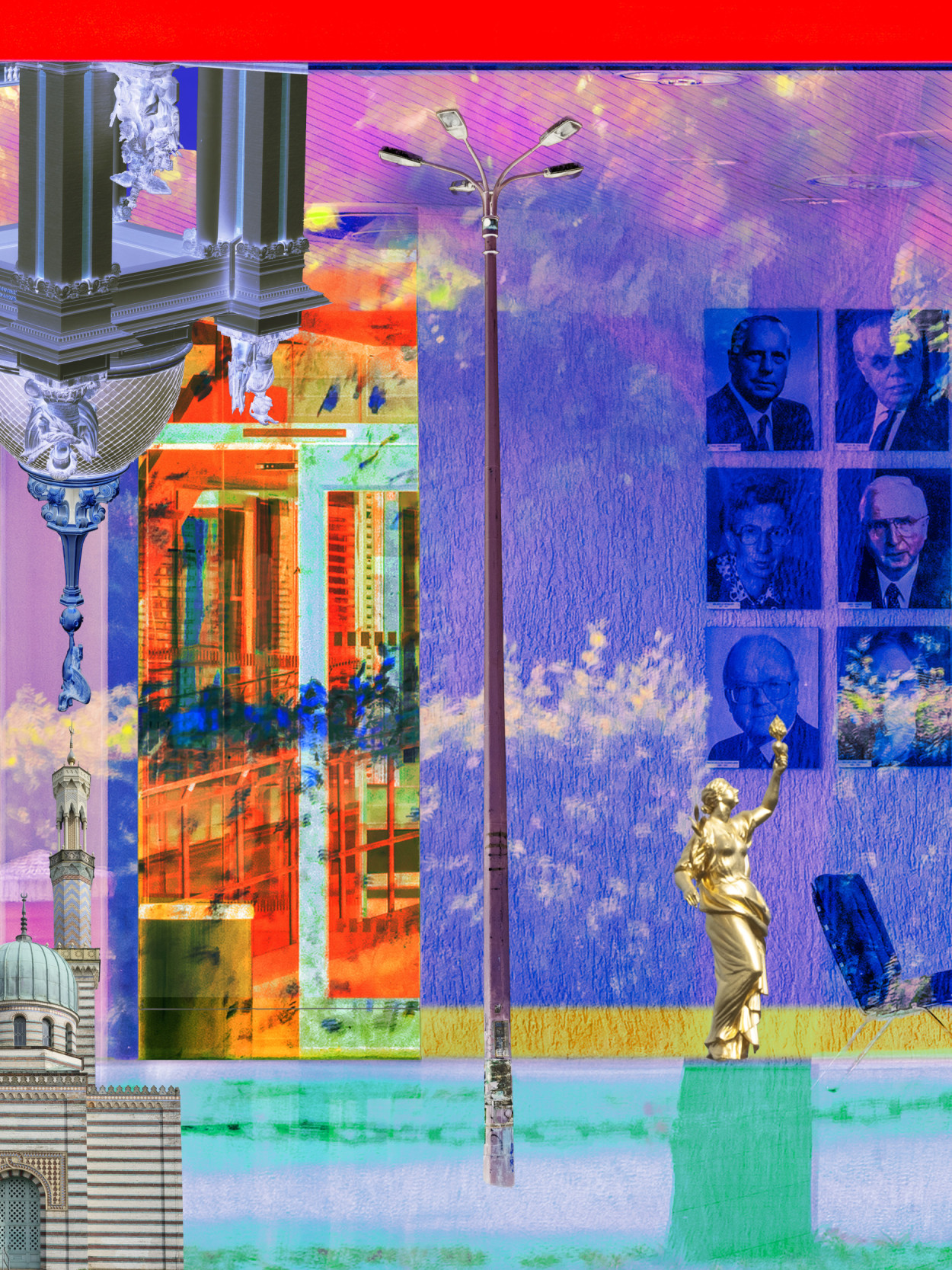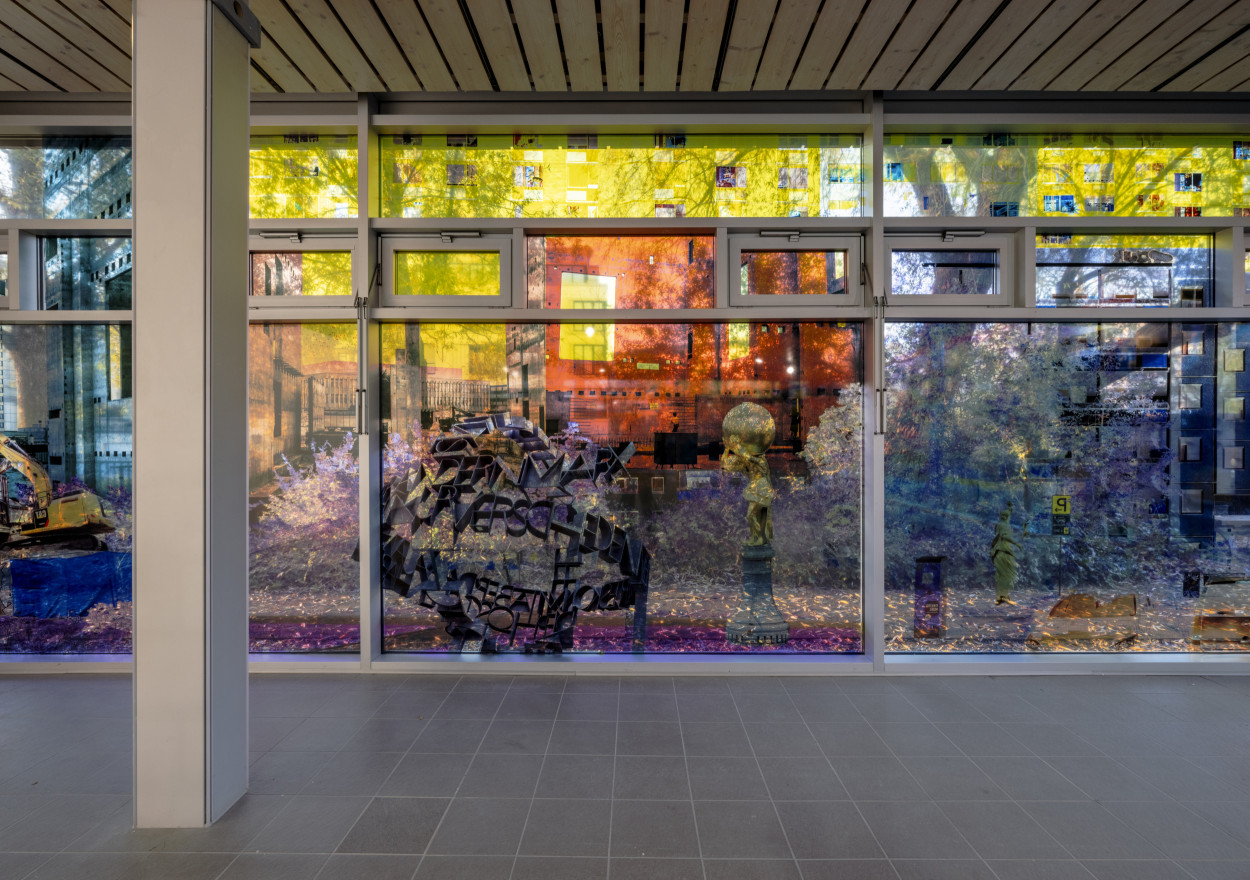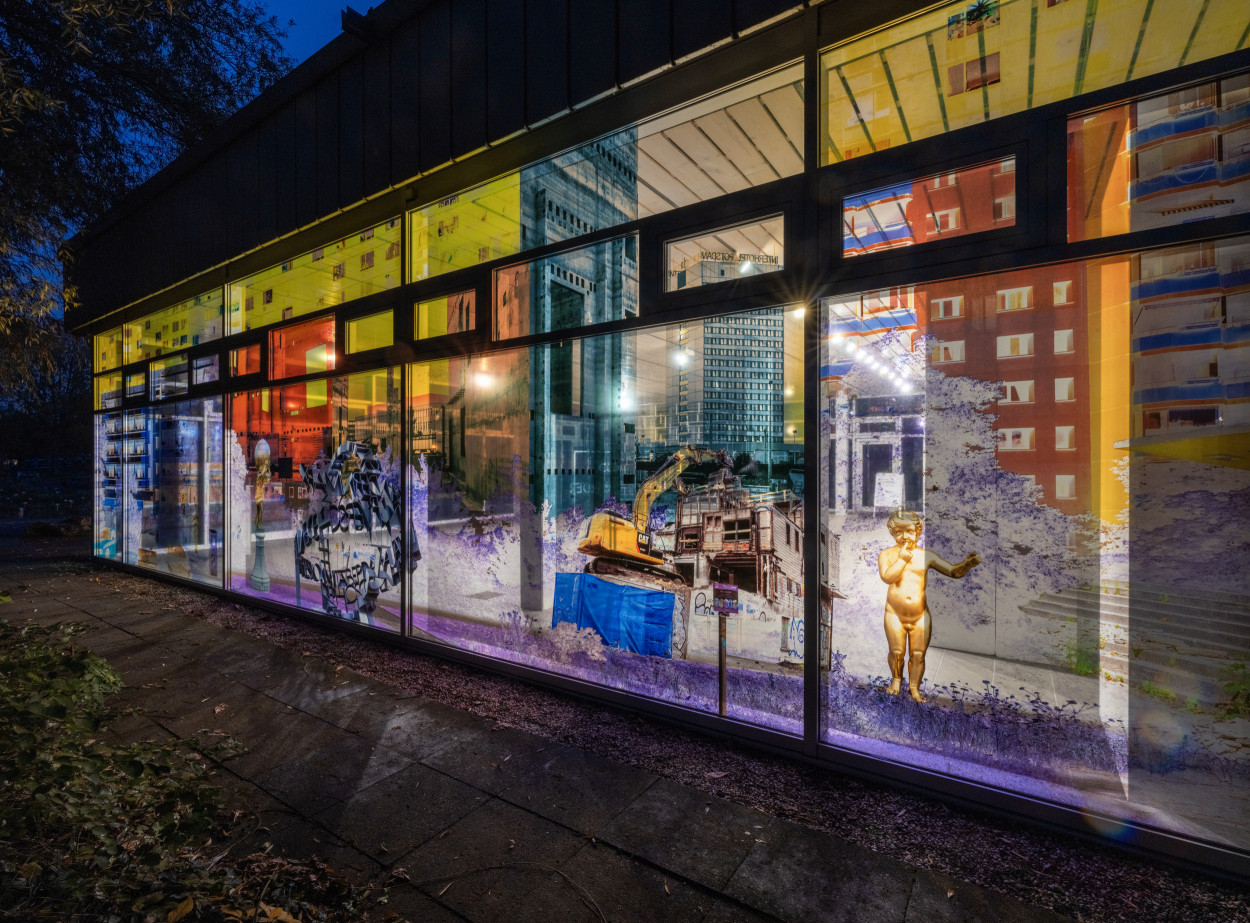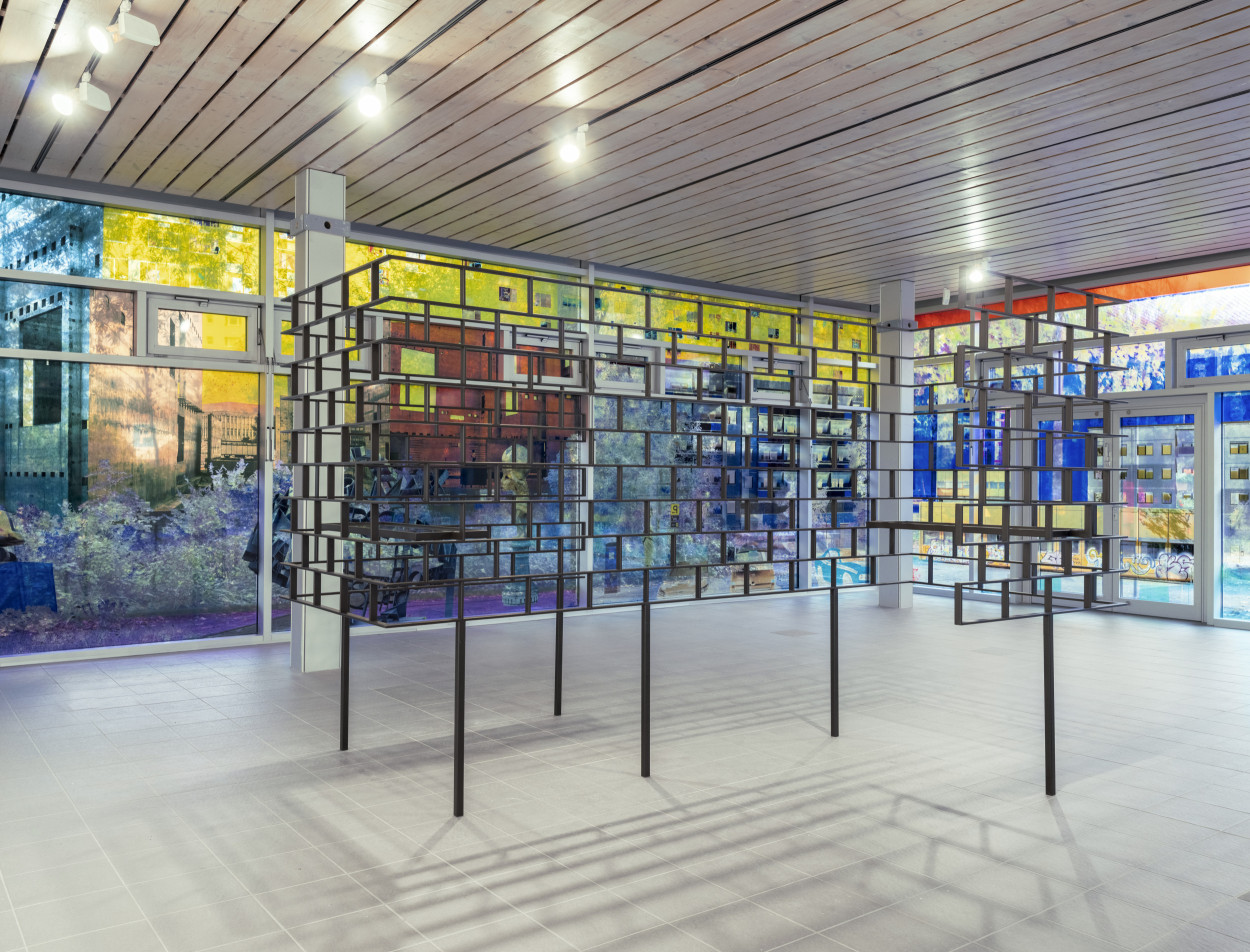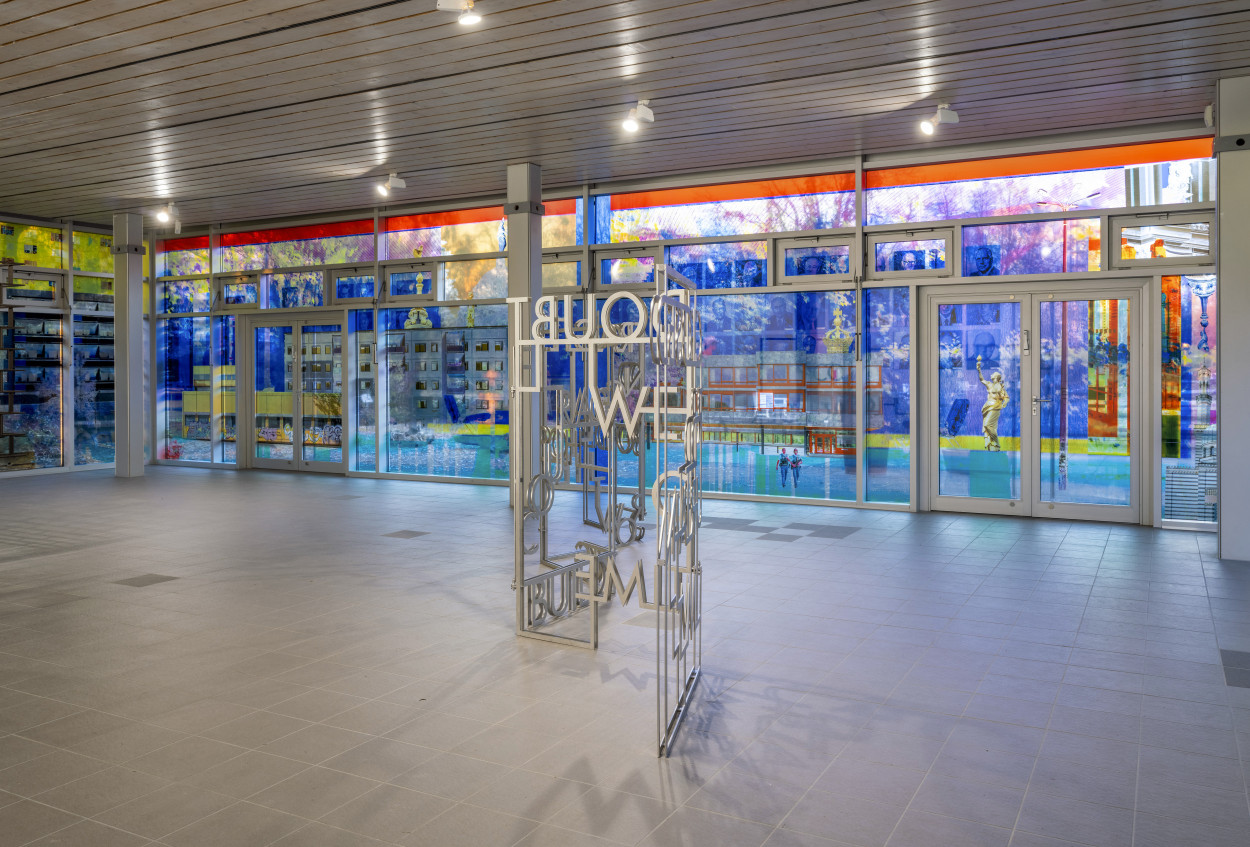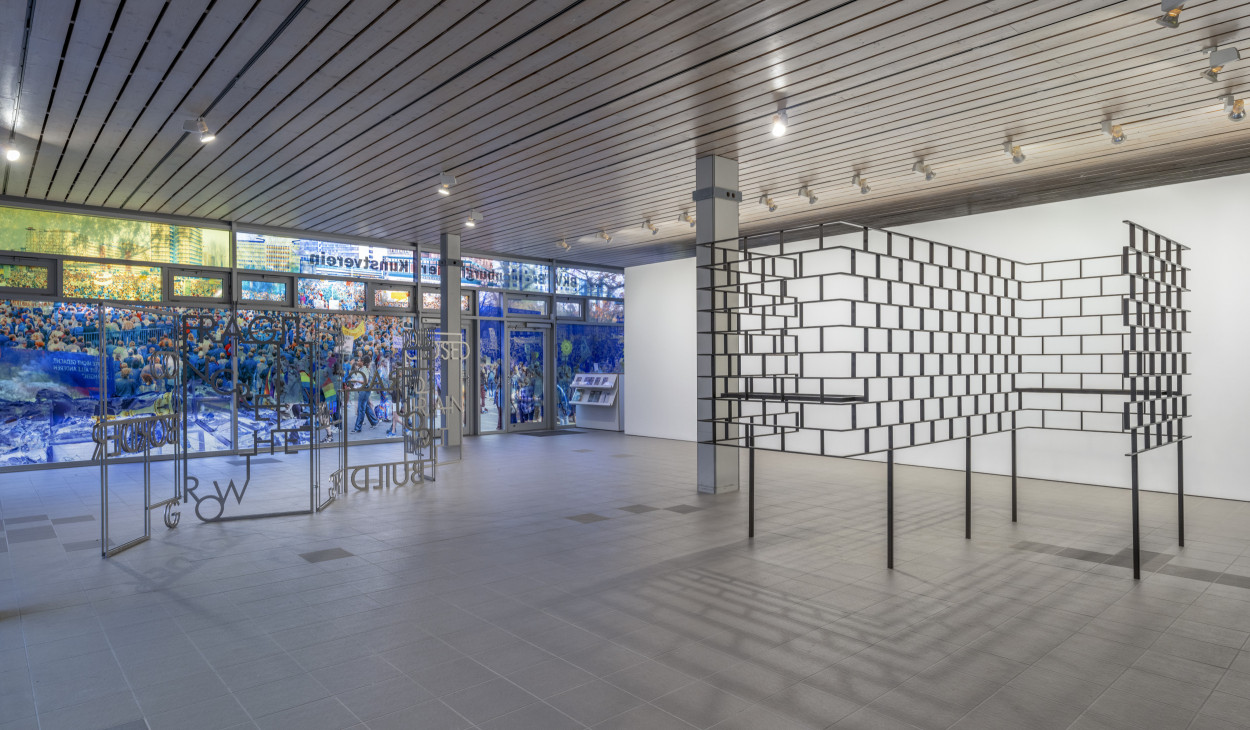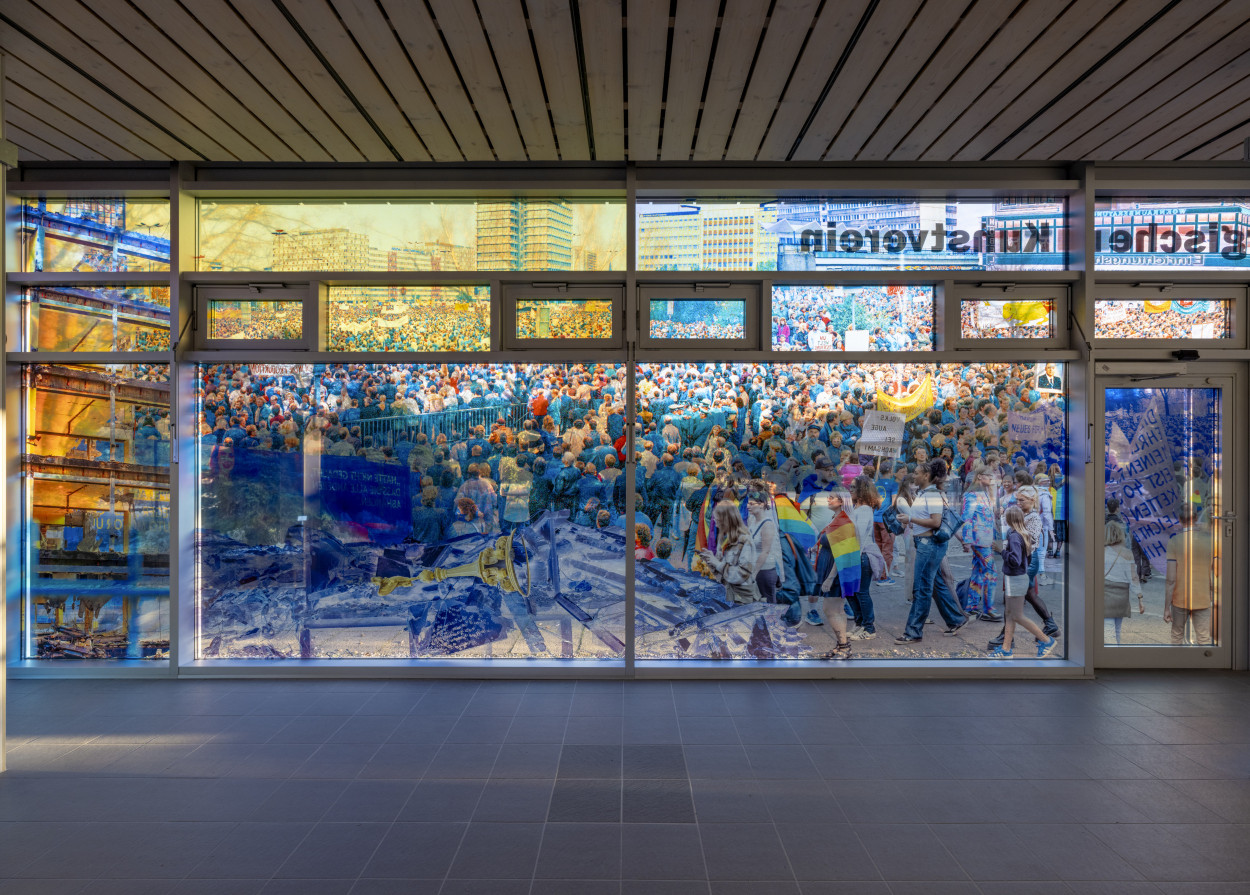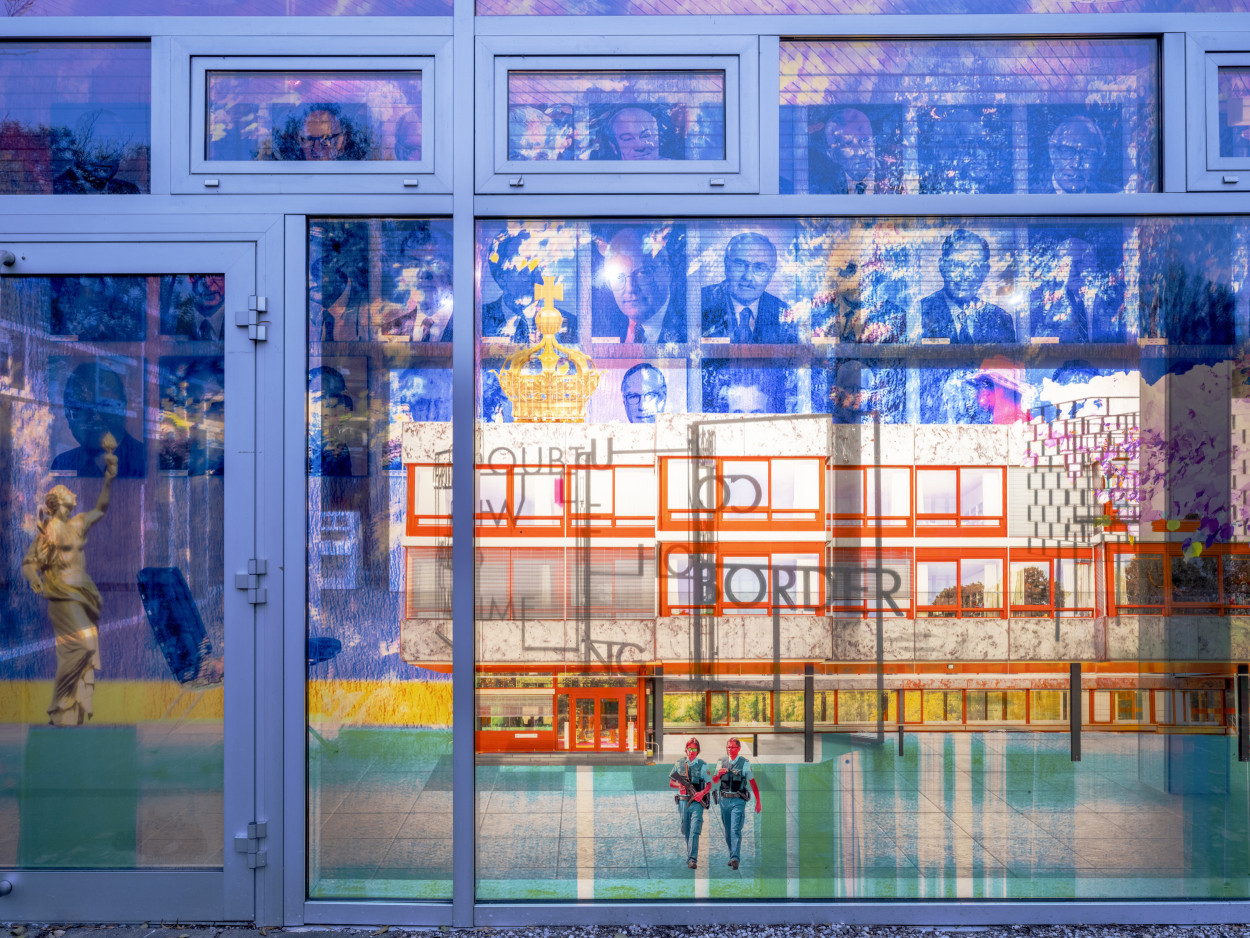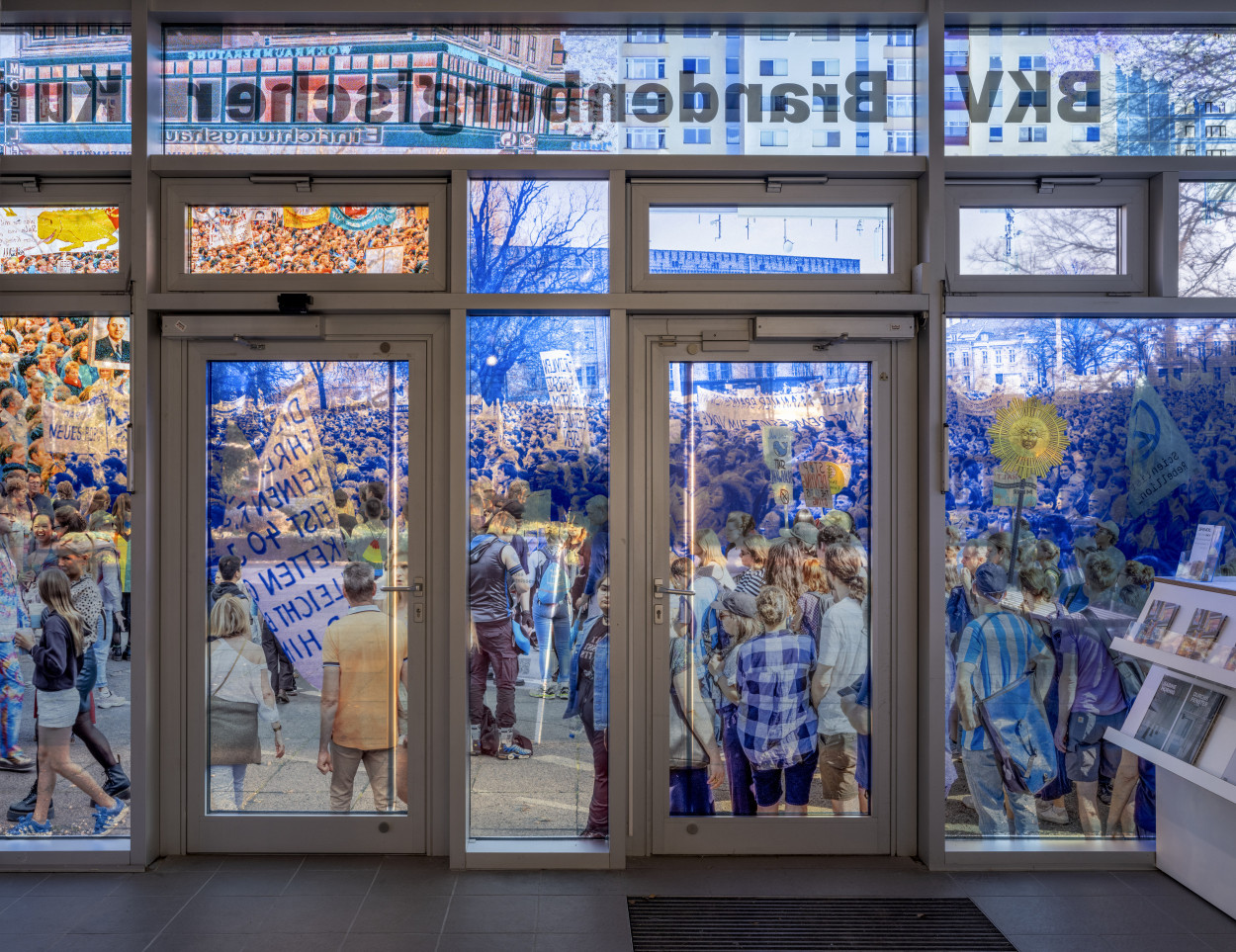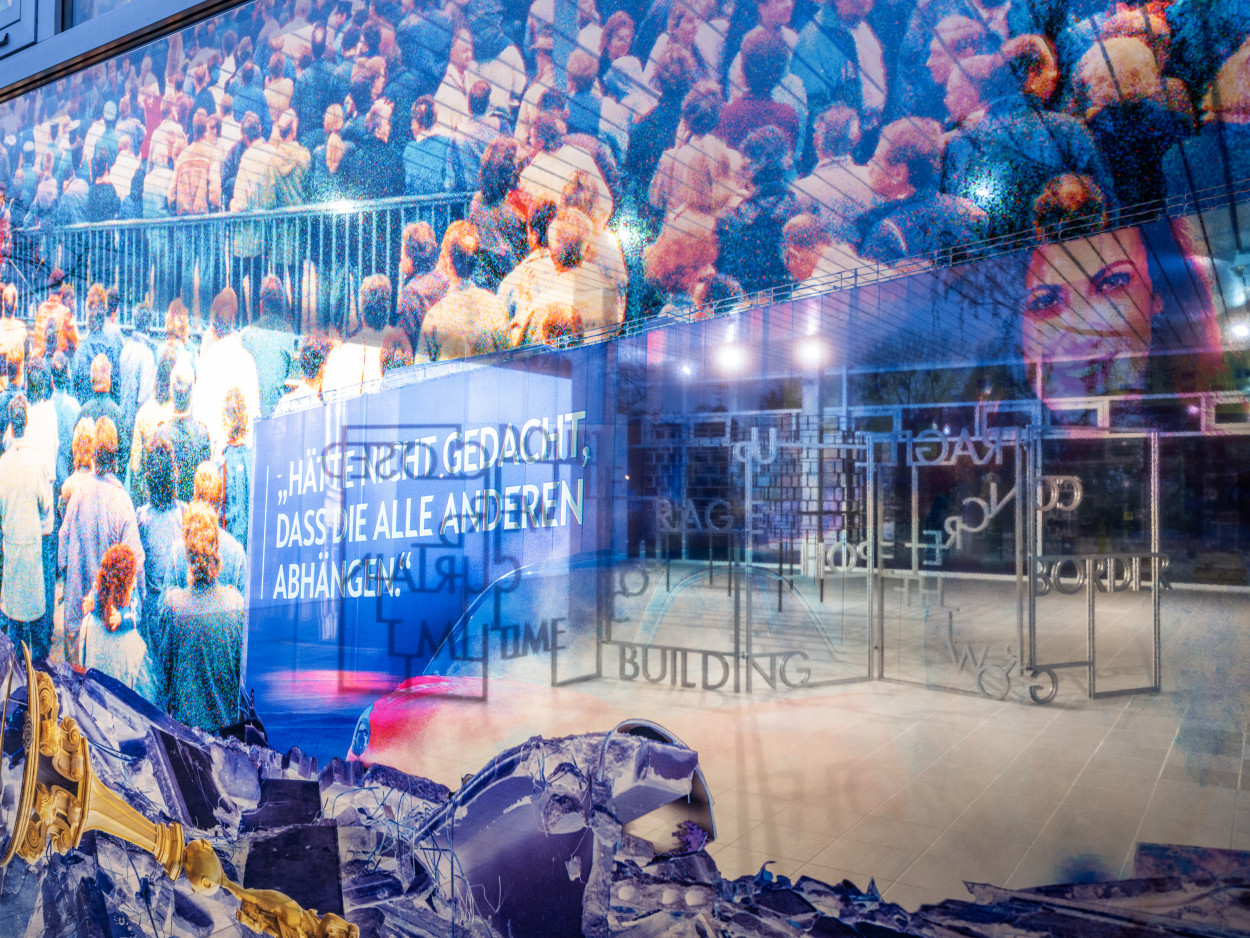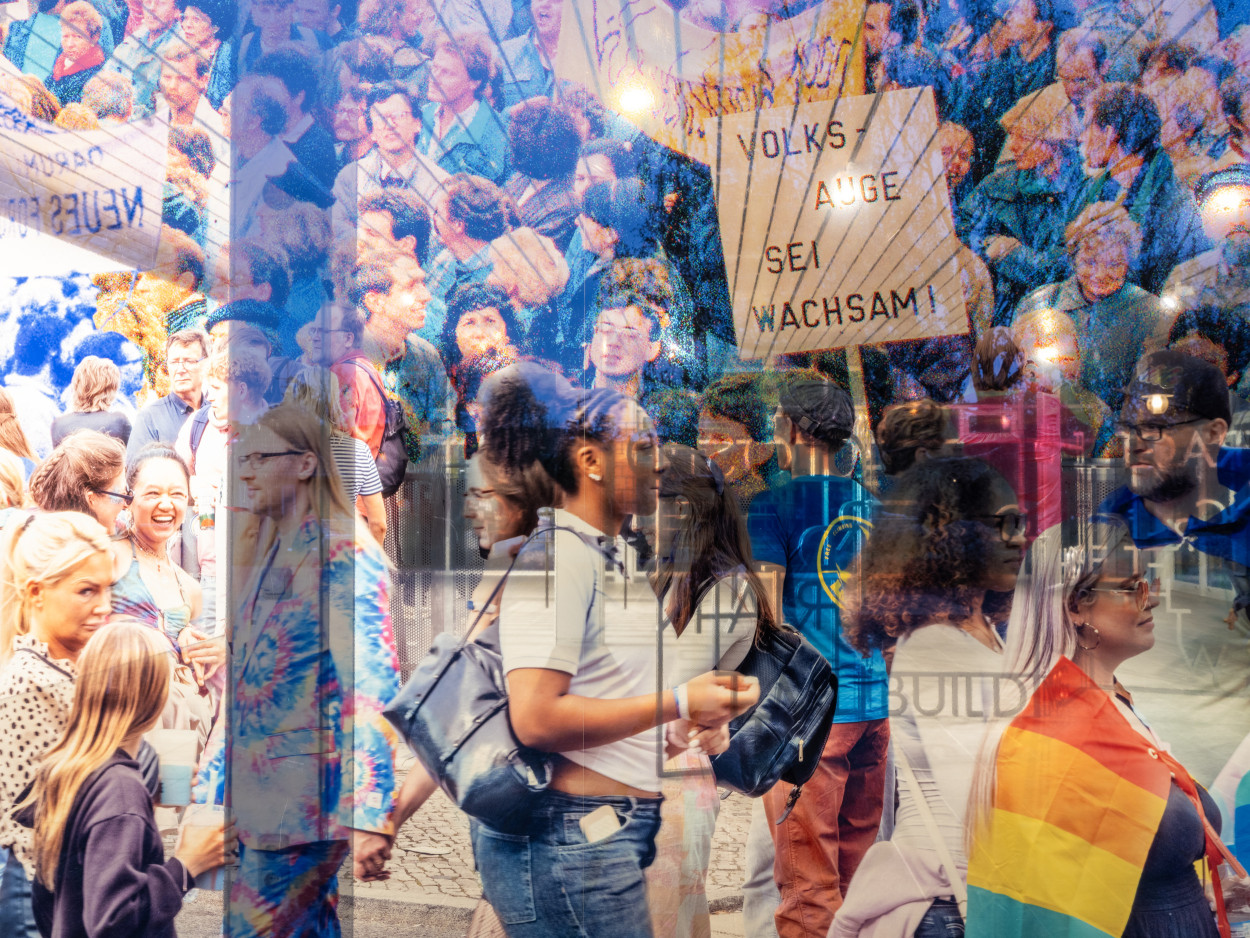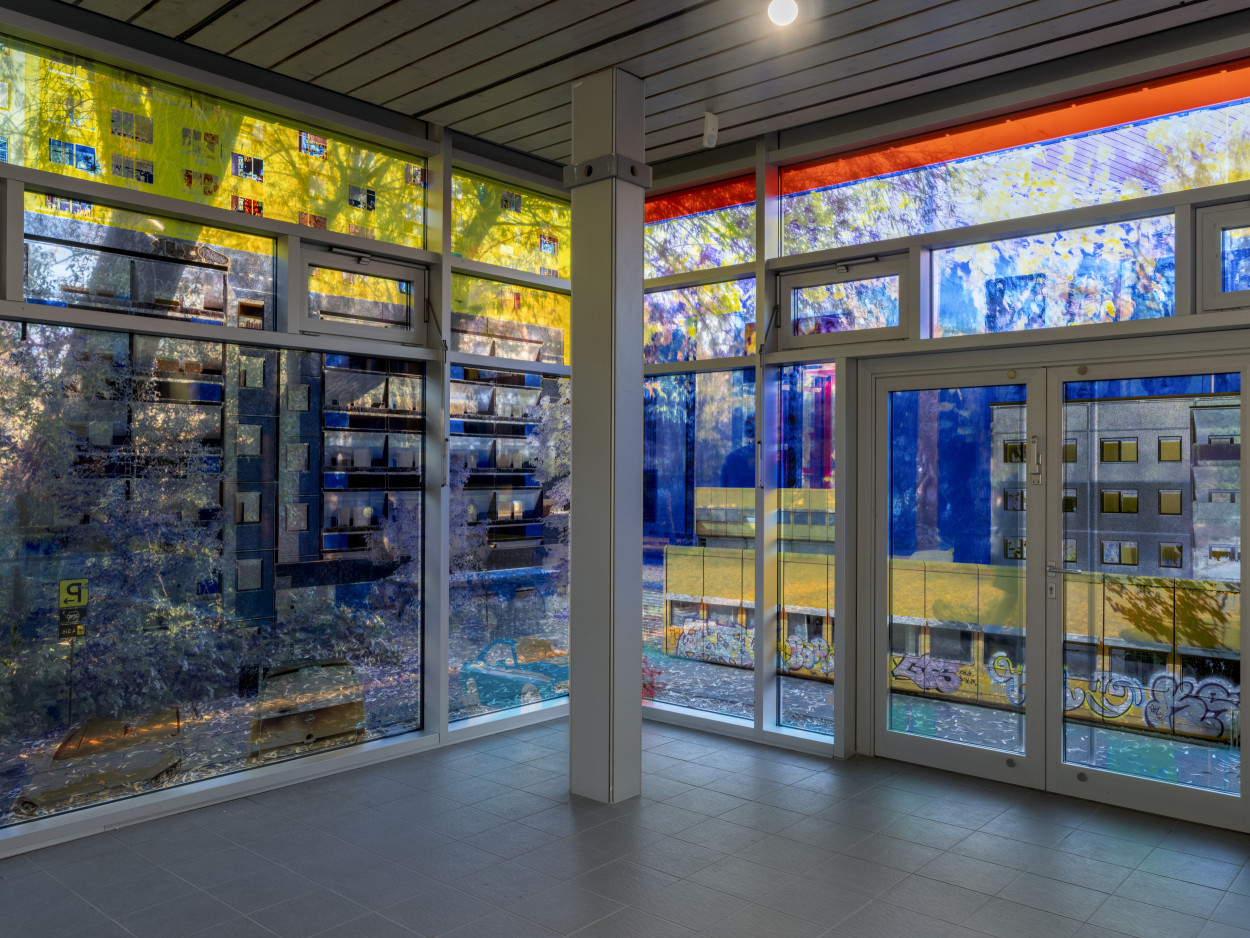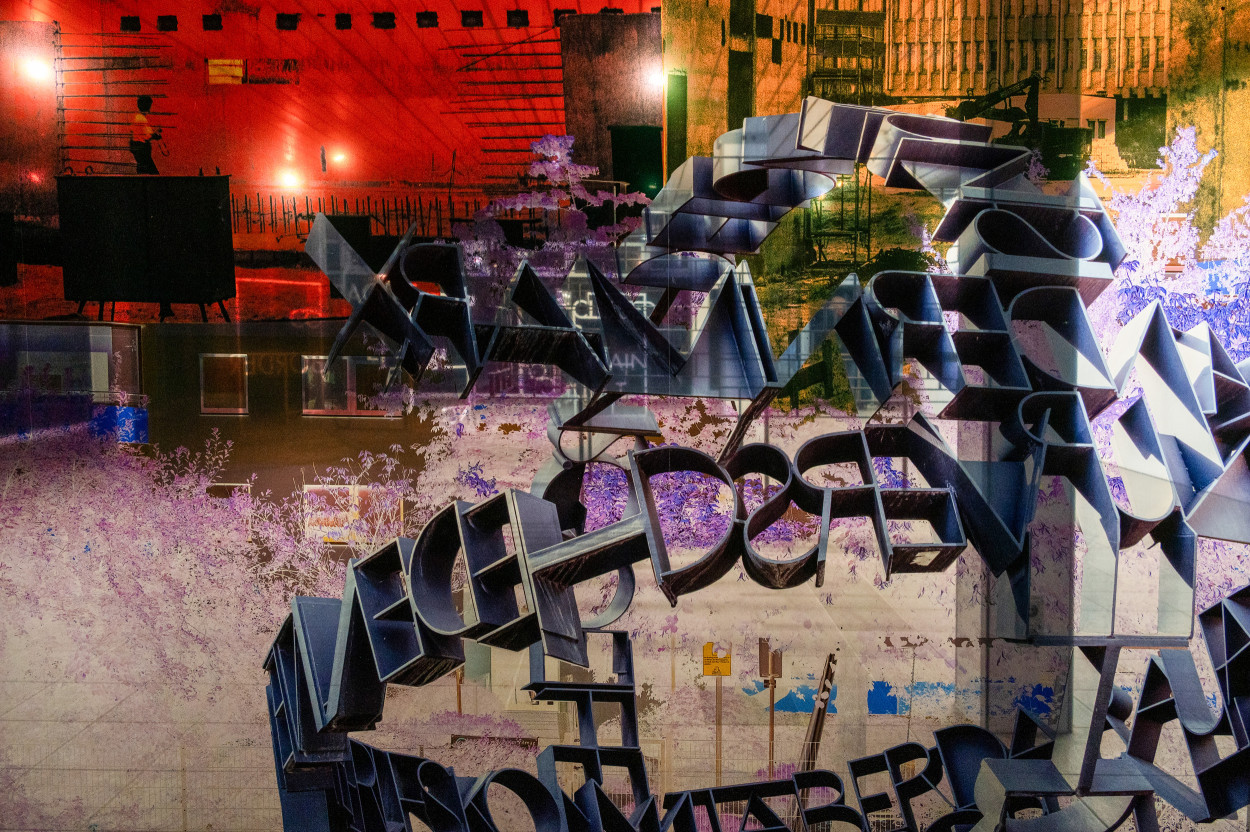IN THE INTERSPACE OF UTOPIAN CONSCIOUSNESS, 2025
Brandenburgischer Kunstverein Potsdam
Solo Show
2025
Artikel im Tagesspiegel/PNN:
sabine-hornig.de/media/pages/presse/a0543c3e6a-1763484731/2025_pnn_wem_gehoert_die_stadt.pdf
Starting in October, and running through February 15, the BKV Potsdam is showing a spatial installation by Sabine Hornig that will transform the exhibition pavilion into a temporary sculpture of light and color. It addresses Modernism in architecture and its democratic promise. The 43-meter-long transparent photo-collage thereby also relates to the exhibition building itself and to its urban planning surroundings.
Curator: Gerrit Gohlke
Venue: Freundschaftsinsel
Here, Hornig continues a work series in public space that has attracted much attention. In this series, she explores the self-understanding of open societies, for example in 2020 in an almost 13-meter-height installation on the glass façade of New York’ LaGuardia Airport, where she fused the geometries of the metropolis with text fragments into a microcosmos of cultures. A currently developing work at a new construction of the German parliament building, the Bundestag, is also concerned with the relationship of tension between the history of democracy
and the history of architecture. In Potsdam, Hornigs work fills the entire façade of the Late Modernist glass pavilion built in 1973. Her installation transforms the panes of the pavilion into an extensive series of images in which scenes of demonstrations, façades of industrialized residential buildings from the time of this building’s construction, and functional architectures from the history of German democracy are melded. Segments of Baroque and Neoclassical Potsdam stand in stark contrast to that, as if the demonstrating sovereign had to reposition itself in an unleashed patchwork of nostalgia and utopia, rationally designed equality and theatrical pathos.
In Sabine Hornig’s “Interspace of Utopian Consciousness”, scenes of demolition from the reversed development of the modern city mix with historical moments in which public buildings became a silent stage for democratic beginnings. The identity of our city itself becomes recognizable as an amalgamated, artificial entity – in which we decide anew each day how we want to encounter each other and whether we still want to remind ourselves of Modernism’s promise of equality.
In this view, architecture is no image construction kit for the well-to-do, but a claim for our voting freedom, as underscored by the objects found in the interior space of the installation.
A 2.10-meter-high lattice structure bears the title “Voting Booth”, but offers no protection for secret voting; rather, it exposes people to observing glances and thereby limits their movements.
In a second object, the vocabulary of opening and that of limitation combine in a folding screen. Here, architecture consists of words in which they and our society contend. Construction
promises utopian hopes and yet sets limits. The decision about which shall dominate lies with us.
Text: Gerrit Gohlke

